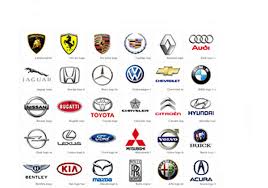Intense OEM Activity
Over the past year or so, several auto manufacturers, or OEM’s, have announced their intention to make a shift from manufacturing cars and trucks to become providers of comprehensive transportation services. And their announcements are backed up by multi-billion-dollar investments.
In December, Hyundai announced its intention to “Transition into a Smart Mobility Provider by 2025” as part of its 5-year, $40B capital plan. Following that, Herbert Diess, CEO of Volkswagen, said in January of 2020 that, as VW shifts to become a maker of electric vehicles and connected cars, “The era of the classic carmaker is over.” In April of 2019, Ford implemented a re-organization, which placed Jim Farley as President of New Business, Technology, and Strategy. Farley’s responsibilities include Ford’s Smart Mobility business, which is intended to invest in and create new mobility services. Finally, General Motors unveiled it’s “Origin” autonomous vehicle in January of 2020. In response, a NY Times article covering the unveiling reported that GM’s plan was not to sell the vehicle, but rather to use it as part of an autonomous taxi service operated by GM’s Cruise subsidiary. Other global OEM’s have made similar announcements.
Why OEM’s have their eyes on Transportation as a Service, or TaaS
The OEM’s interest in becoming transportation service providers is understandable. They see growing interest of consumers in purchasing transportation this way through ride sharing, micromobility services, etc. This causes the OEM’s to fear a shift of customer loyalty toward the providers of those services, and away from the manufacturers. OEM’s are also widely installing Connected Car technologies, which allow for easier remote management of fleets of vehicles. But it is not easy to become a service provider, and it is even harder to do it while continuing to be a profitable manufacturer.
Challenge #1: Running a Service Business Requires New Skills
Today’s OEM’s are
very good at efficiently manufacturing huge volumes of complex vehicles with
high reliability and consistent quality.
OEM’s are good at logistics and supply chain. OEM’s are good at product and manufacturing
engineering. OEM’s are good at product
design. But OEM’s have very little
experience with managing 1:1 customer relationships. In managing a service, every single customer
experience is unique. To be successful,
a service provider has to be great at listening to and evaluating customer
feedback. A service provider has to
quickly adjust their service to match changing customer needs (no more 4-year
product cycles!). To be profitable, a
service provider has to rapidly adjust capacity and pricing to match
demand. To their credit, many OEM’s are
experimenting in these spaces through investments in start-ups and through
services pilots. They are certainly
learning from these experiences. But to
be successful and to successfully shift their business models, OEM’s will need
to gain a lot more experience.
Challenge #2: The Services Business may not be Aligned with the Manufacturing Business
Several OEM’s have
painted a vision of providing comprehensive transportation services for
consumers — from bikes and scooters, to cars and trucks, to buses, planes, and
trains. No OEM has indicated that they
intend to make every device in the chain, but most indicate that they plan to
use their own cars and trucks within their transportation service. The challenge comes when the OEM doesn’t
happen to make the product that is best suited to the needs of the
transportation service. For example,
suppose the transportation services needs a standard midsize sedan as part of
its service suite. What happens if the
parent OEM doesn’t make the most space-efficient, or most reliable, or most
fuel-efficient midsize sedan? Should the
transportation service have the freedom to buy the best vehicle for its
service, or will it be forced to buy a sub-optimal sedan from the parent and
eat the loss in efficiency or revenue?
Challenge #3: Competition with the OEM’s Traditional Customers
Before it was called “Transportation as a Service (TaaS),” or “Mobility as a Service (MaaS),” this concept had another name: the Fleet Business. Rental companies and Fleet Management companies have been in the business of providing transportation services for a long time. These Fleet customers can represent 20% or more of some OEM’s sales. Fleet customers will see a move by OEM’s into Transportation Services as a shift from the OEM as a Supplier to the OEM as a Direct Competitor. In order to maintain their sales volumes, OEM’s may have to choose between serving their traditional customers and building their new service businesses.
So, all credit to the traditional OEM’s for recognizing the growing customer interest in transportation as a service. They can take credit, also, for seeing the potential for disruptive business models that are enabled by Connected Car and other technologies. OEM’s may find, though, that their new TaaS businesses may need to quickly become much more independent in order to be build the necessary skills to grow and become fully successful.


